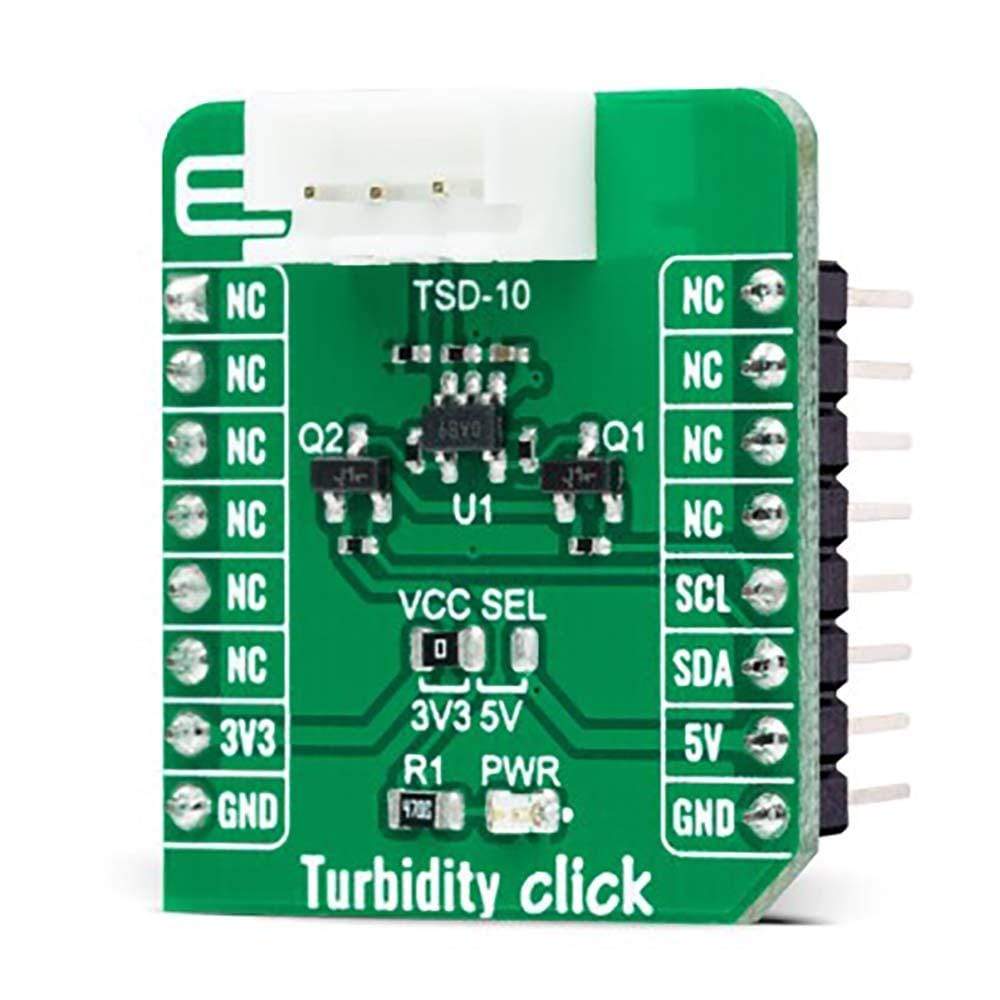
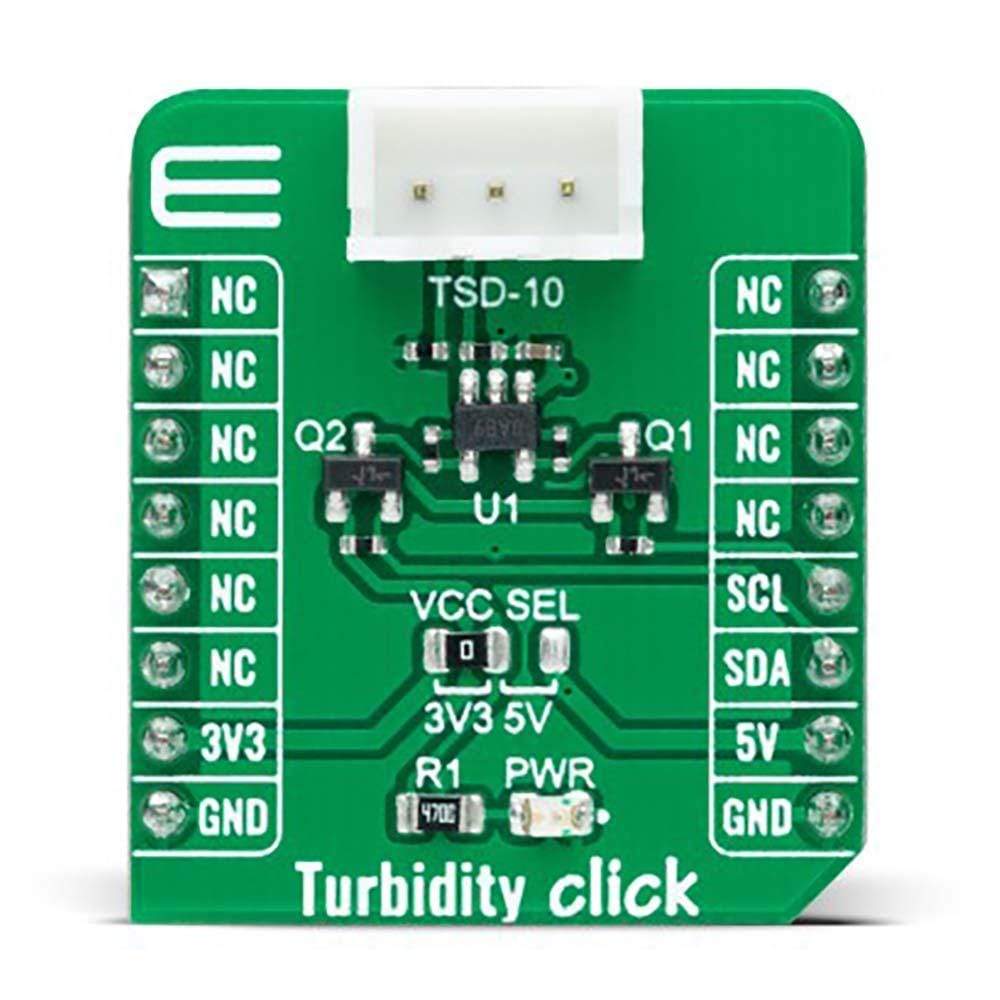
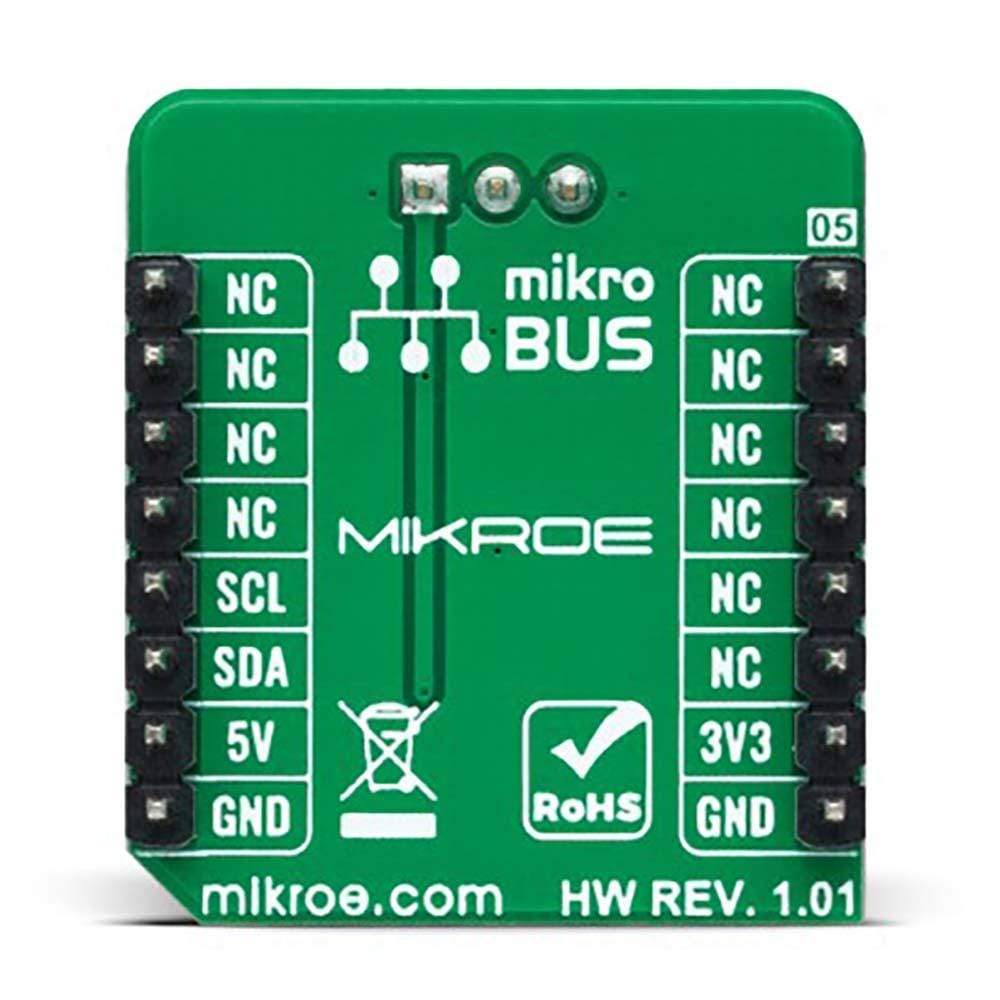
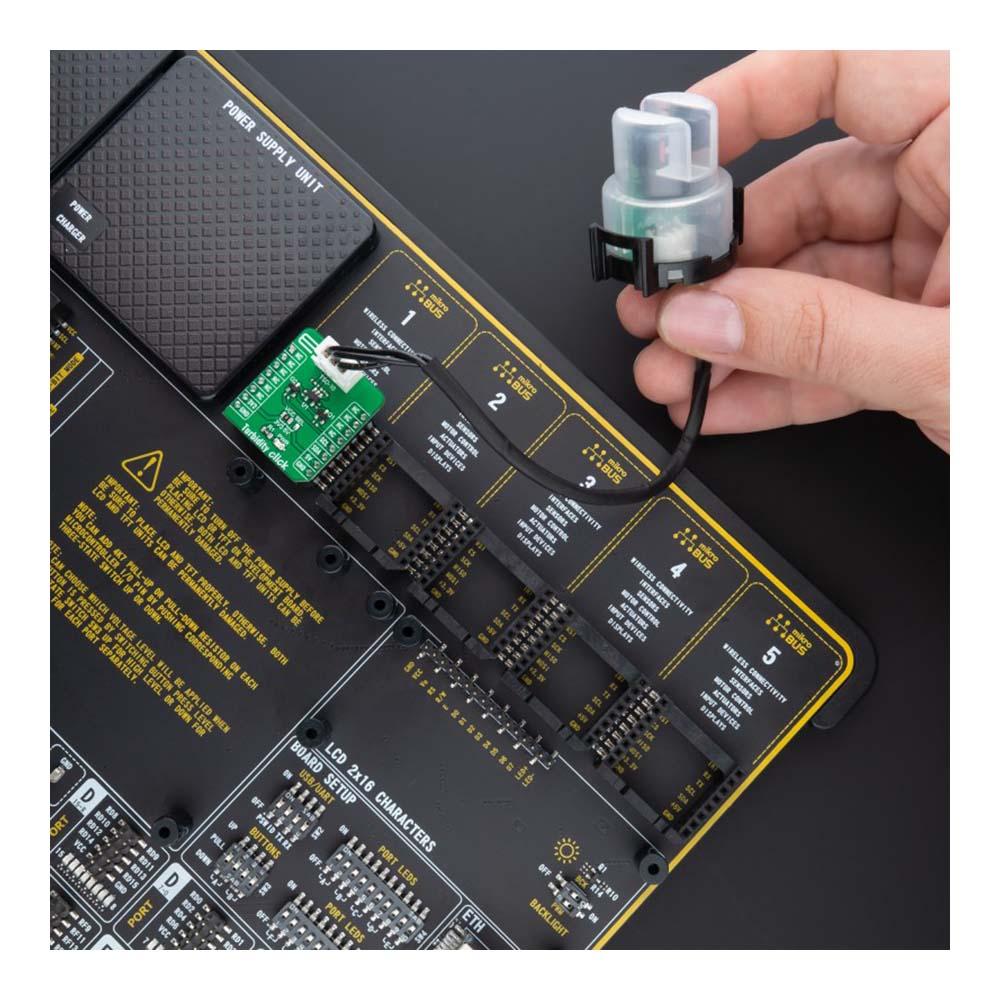
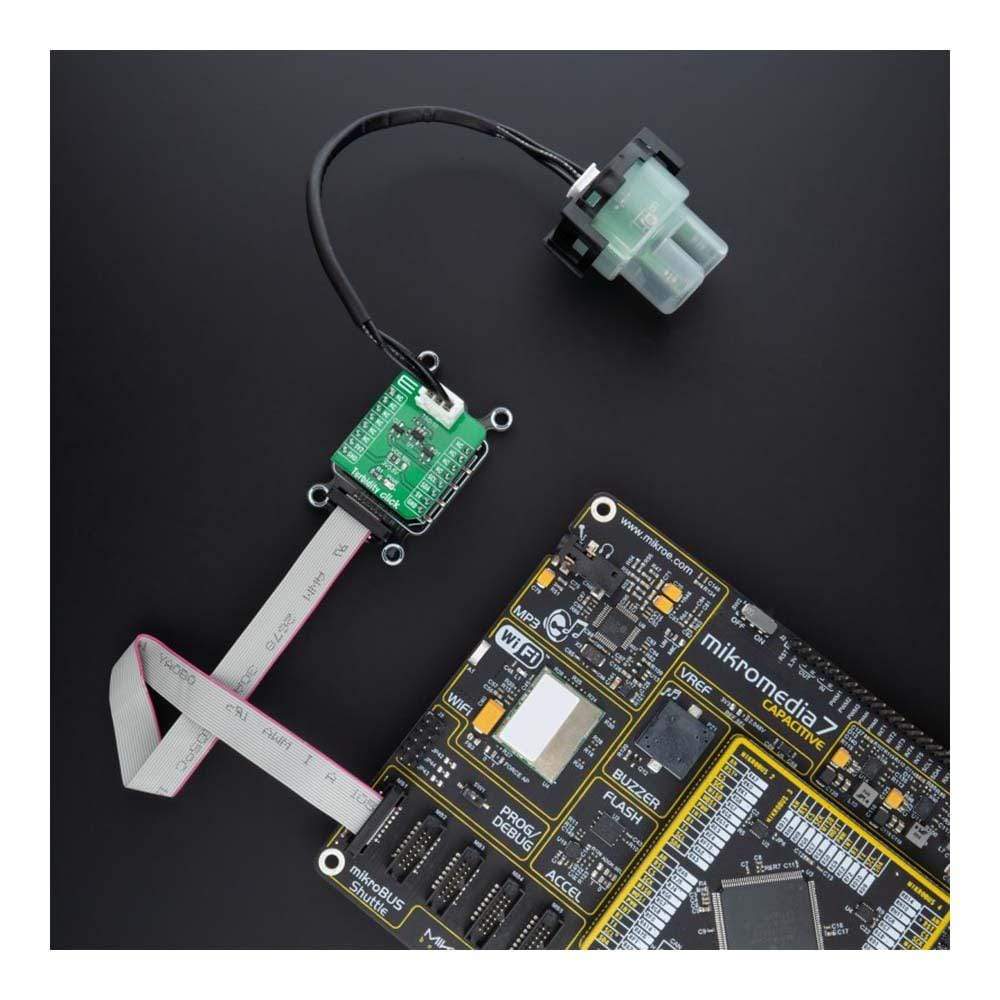
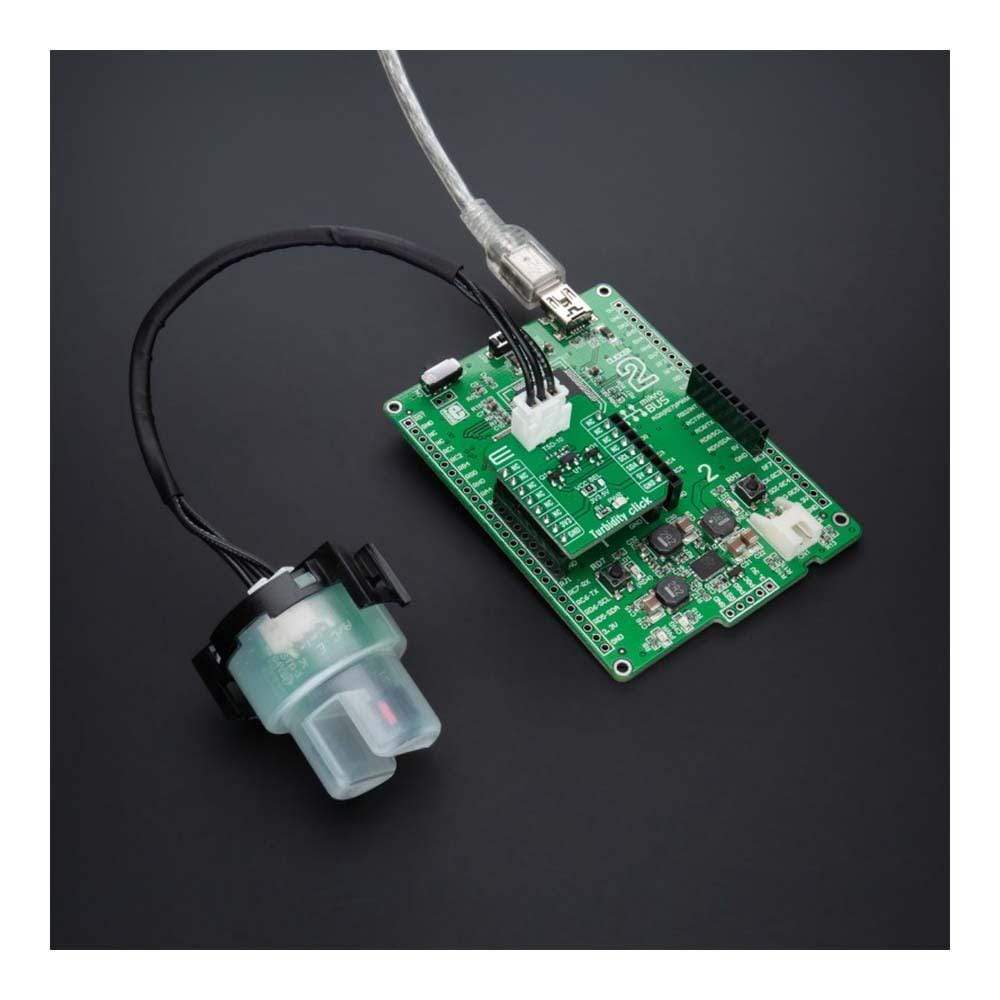
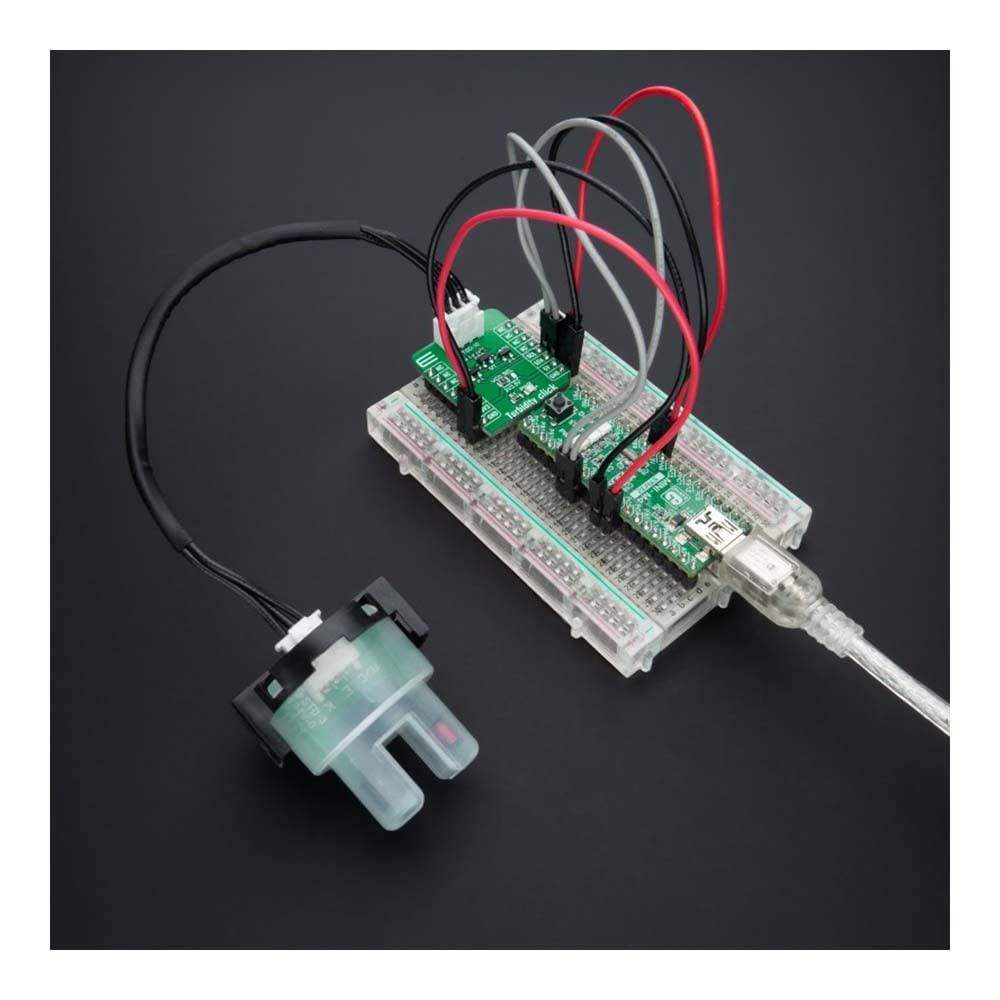
Overview
The Turbidity Click Board™ is an adapter Click board™, used to interface a compatible turbidity sensor with the host MCU. This board features one 1x3 2.5mm connector suitable for connecting a Turbidity sensor via an additional 3-wire Male to Male Cable - 15 cm for the Turbidity Click Board™ specially made for this purpose. It allows users to upgrade their projects with a sensor that senses the cloudiness or haziness of a fluid caused by large numbers of individual particles invisible to the naked eye. This sensor also measures temperature as well as turbidity.Downloads
How Does The Turbidity Click Board™ Work?
The Turbidity Click Board™ is an adapter that simplifies the interface of a Turbidity Sensor with a host MCU. This Click board™ represents a small-size PCB that can be connected to the mikroBUS™ socket like any other Turbidity Click Board™, with a 1x3 2.5mm pitch vertical type board connector placed on itself used for the turbidity sensor connection. Each of the connector pins corresponds to a pin of the turbidity sensor. Each of the connector pins corresponds to the turbidity sensor pins connected to this same connector via an additional 3-wire cable for the Turbidity Click Board™, specially made for this purpose. This way allows easy pin access and manipulation while retaining a perfect connection quality at all times.
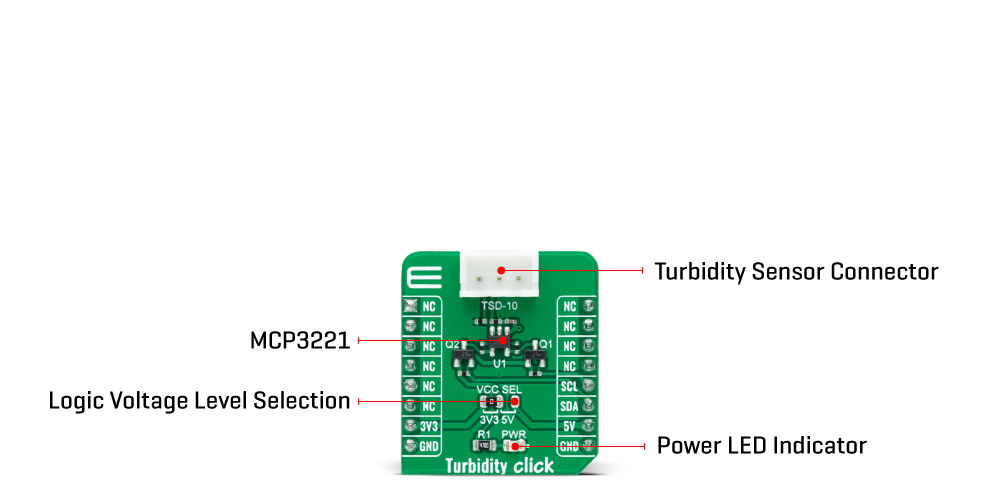
The Turbidity Click Board™ allows users to upgrade their projects with a sensor that senses the cloudiness or haziness of a liquid caused by large numbers of individual particles invisible to the naked eye. The turbidity level is determined based on a comparison between clean water measurements and later based on the used water at the end of usage; more precisely, the turbidity sensor measures the amount of transmitted light to determine the turbidity of the liquid. As well as turbidity, this sensor also measures liquid temperature.
The analog output voltage of the Turbidity Sensor can be converted to a digital value using MCP3221, a successive approximation A/D converter with a 12-bit resolution from Microchip, using a 2-wire I2C compatible interface. Using MCP3221 and I2C interface, data transfers at rates of up to 100kbit/s in the Standard and 400kbit/s in the Fast Mode.
The Turbidity Click Board™ can operate with both 3.3V and 5V logic voltage levels selected via the VCC SEL jumper. This way, it is allowed for both 3.3V and 5V capable MCUs to use the I2C communication lines properly. However, the Click board™ comes equipped with a library containing easy-to-use functions and an example code that can be used, as a reference, for further development.
SPECIFICATIONS
| Type | Adapter, Environmental |
| Applications | The Turbidity Click Board™ can be used to senses the cloudiness or haziness of a fluid caused by large numbers of individual particles invisible to the naked eye |
| On-board modules | The Turbidity Click Board™ is adapter with socket for the TSD-10 Turbidity Sensor |
| Key Features | Low power consumption, high performance, allowing sensing of the cloudiness or haziness of a fluid, I2C configurable analog-to-digital converter, suitable for both mikroBUS™ power rails, and more |
| Interface | I2C |
| Compatibility | mikroBUS |
| Click board size | S (28.6 x 25.4 mm) |
| Input Voltage | 3.3V or 5V |
PINOUT DIAGRAM
This table shows how the pinout of the Turbidity Click Board™ corresponds to the pinout on the mikroBUS™ socket (the latter shown in the two middle columns).
| Notes | Pin |  |
Pin | Notes | |||
|---|---|---|---|---|---|---|---|
| NC | 1 | AN | PWM | 16 | NC | ||
| NC | 2 | RST | INT | 15 | NC | ||
| NC | 3 | CS | RX | 14 | NC | ||
| NC | 4 | SCK | TX | 13 | NC | ||
| NC | 5 | MISO | SCL | 12 | SCL | I2C Clock | |
| NC | 6 | MOSI | SDA | 11 | SDA | I2C Data | |
| Power Supply | 3.3V | 7 | 3.3V | 5V | 10 | 5V | Power Supply |
| Ground | GND | 8 | GND | GND | 9 | GND | Ground |
ONBOARD SETTINGS AND INDICATORS
| Label | Name | Default | Description |
|---|---|---|---|
| LD1 | PWR | - | Power LED Indicator |
| JP1 | VCC SEL | Left | Logic Level Voltage Selection 3V3/5V: Left position 3V3, Right position 5V |
TURBIDITY CLICK ELECTRICAL SPECIFICATIONS
| Description | Min | Typ | Max | Unit |
|---|---|---|---|---|
| Supply Voltage | 3.3 | - | 5 | V |
| Nephelometric Turbidity Unit | 0 | - | 4500 | NTU |
| Operating Temperature Range | -10 | +25 | +90 | °C |
| General Information | |
|---|---|
Part Number (SKU) |
MIKROE-4276
|
Manufacturer |
|
| Physical and Mechanical | |
Weight |
0.02 kg
|
| Other | |
Country of Origin |
|
HS Code Customs Tariff code
|
|
EAN |
8606027384264
|
Warranty |
|
Frequently Asked Questions
Have a Question?
Be the first to ask a question about this.







